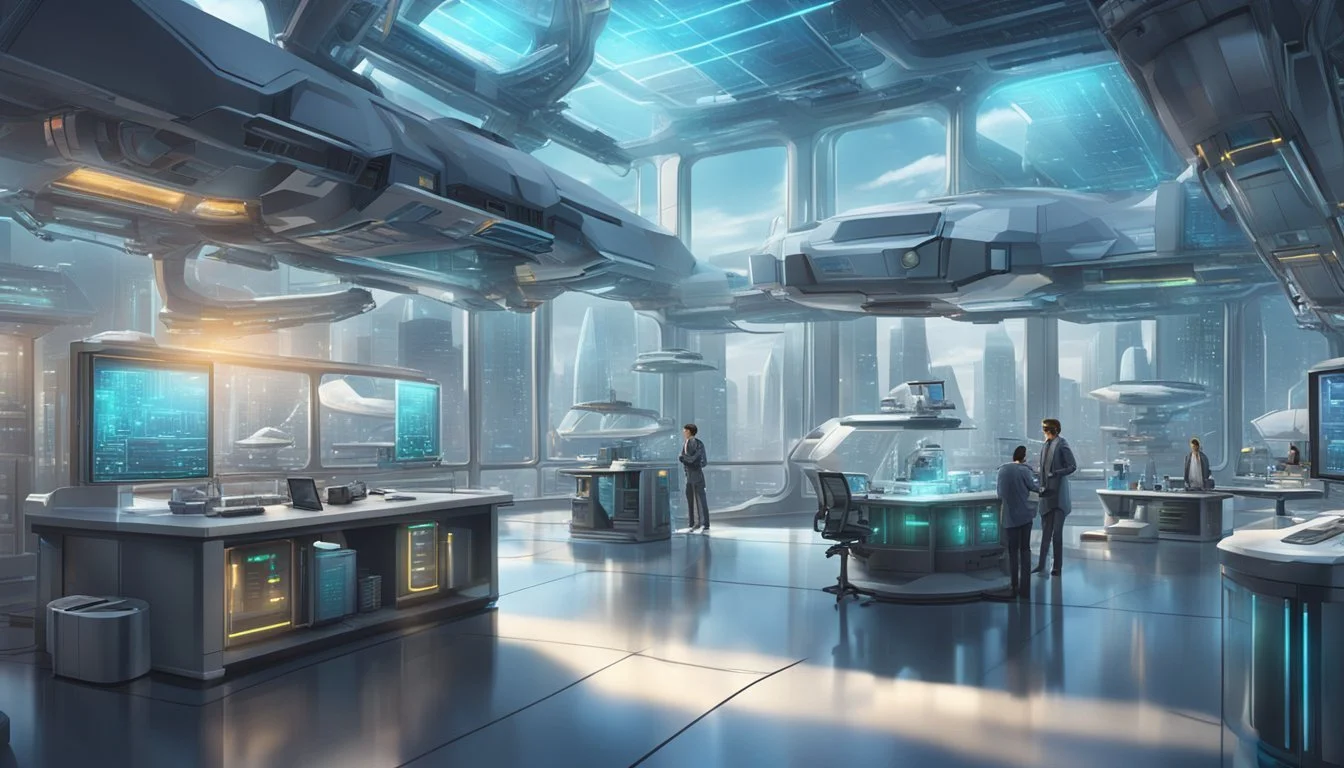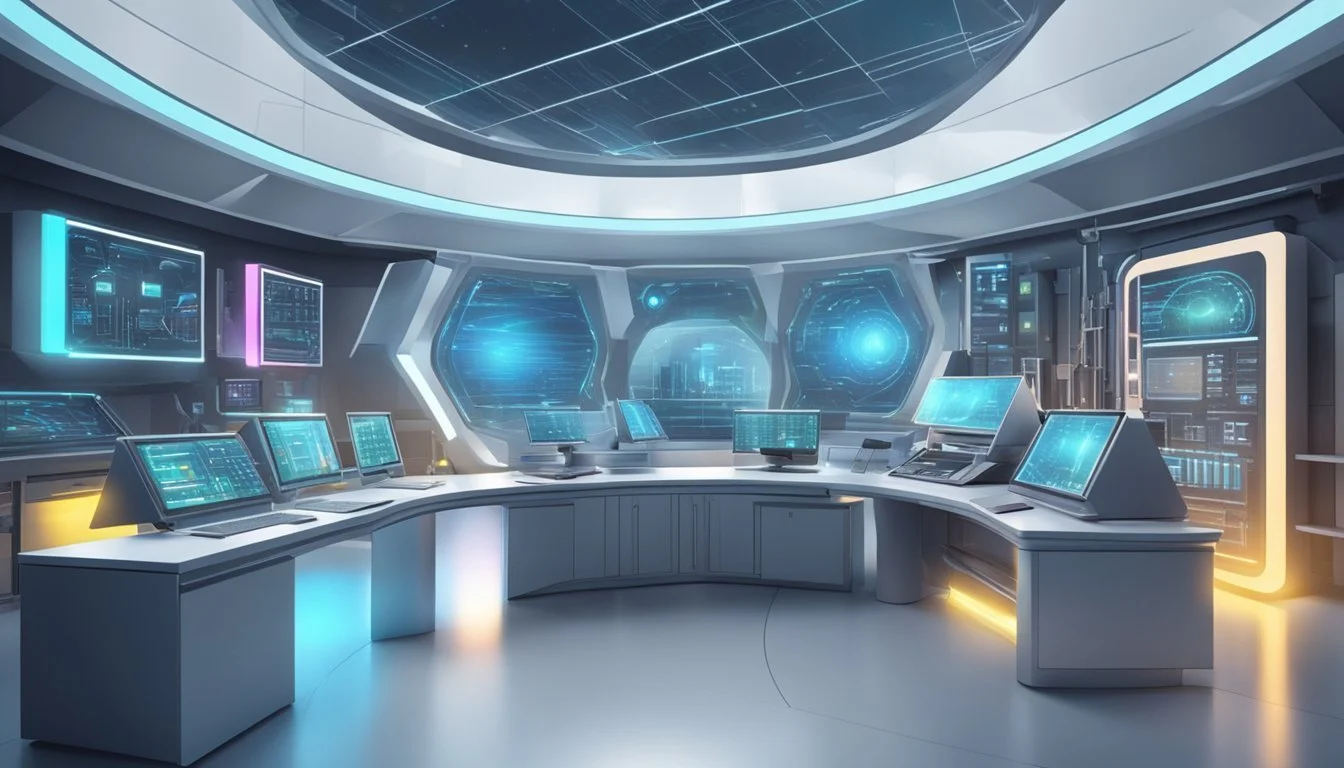8 Documentaries About Scientific Breakthroughs Inspired by Science Fiction
From Fantasy to Reality
Science fiction has long been a wellspring of inspiration for scientific and technological advancements. From iconic stories to groundbreaking films, the genre has sparked imagination and innovation across various fields of research and development.
Documentaries exploring the intersection of science fiction and real-world breakthroughs offer viewers a fascinating glimpse into how creativity drives progress. These films showcase the journey from fictional concepts to tangible scientific achievements, highlighting the visionaries and researchers who bring seemingly impossible ideas to life. By examining eight such documentaries, audiences can gain insight into the profound impact science fiction continues to have on shaping our technological future.
1) The Andromeda Strain (1971)
The Andromeda Strain, directed by Robert Wise, is a science fiction thriller based on Michael Crichton's novel. It follows a team of scientists investigating a deadly extraterrestrial organism that threatens humanity.
The film showcases cutting-edge scientific procedures and technology of its time. It depicts a secret underground laboratory where researchers work to identify and contain the alien microorganism.
The movie explores themes of scientific discovery, biological warfare, and the potential consequences of space exploration. It emphasizes the importance of rigorous scientific methods in confronting unknown threats.
The Andromeda Strain's attention to scientific detail and plausible scenarios set it apart from many science fiction films of its era. It presents a realistic portrayal of how scientists might respond to a global pandemic of alien origin.
The film's focus on microscopic threats and decontamination procedures feels particularly relevant in light of modern concerns about emerging pathogens and biosecurity.
https://en.wikipedia.org/wiki/The_Andromeda_Strain_(film)
2) Blade Runner (1982)
Blade Runner, directed by Ridley Scott, is a landmark science fiction film that explores themes of artificial intelligence and what it means to be human. Set in a dystopian Los Angeles of 2019, the movie depicts a world where bioengineered humanoids called replicants are used for dangerous off-world labor.
The film's groundbreaking visual effects and intricate production design have inspired countless scientific endeavors. Its portrayal of advanced AI and genetic engineering sparked discussions about the ethical implications of creating artificial life.
Blade Runner's influence extends beyond cinema, impacting fields like robotics and bioengineering. Scientists and researchers have cited the film as inspiration for their work on developing humanoid robots and exploring the boundaries of artificial intelligence.
The movie's exploration of memory implantation and identity has also influenced neuroscience research. Its depiction of climate change and environmental degradation has resonated with environmental scientists and urban planners.
Blade Runner continues to be celebrated for its prescient vision of the future and its lasting impact on both science fiction and real-world scientific advancements.
3) Jurassic Park (1993)
Jurassic Park revolutionized the public's perception of genetic engineering and paleontology. The film's premise of resurrecting dinosaurs through ancient DNA captured in amber sparked widespread interest in these scientific fields.
The movie's release coincided with real-world advancements in DNA research. Just a day before the film's debut, the journal Nature published findings on the oldest DNA ever recovered at that time.
Jurassic Park's portrayal of genetic engineering, while dramatized, introduced complex scientific concepts to mainstream audiences. It sparked discussions about the ethical implications of reviving extinct species and manipulating genetic material.
The film's success led to increased funding and public interest in paleontology and genetics research. Many scientists credit Jurassic Park with inspiring a new generation to pursue careers in these fields.
While the science in Jurassic Park took creative liberties, it drew from existing theories and technologies. The movie's impact on scientific discourse and public engagement with these topics continues to be felt decades after its release.
[https://en.wikipedia.org/wiki/Jurassic_Park_(film)]
4) Gattaca (1997)
Gattaca depicts a future where genetic engineering has become commonplace, exploring the ethical implications of such technology. The film follows Vincent Freeman, a man born without genetic enhancement, as he pursues his dream of space travel in a society that discriminates based on genetic makeup.
Though initially underperforming at the box office, Gattaca has since become a cult classic. Its portrayal of genetic discrimination and the potential consequences of widespread genetic engineering has sparked important discussions in scientific and ethical circles.
The film's themes have proven prescient, as genetic testing and editing technologies have advanced significantly since its release. Today, genetic ancestry tests are widely available to consumers, and gene therapy treatments are being developed for various medical conditions.
Gattaca continues to serve as a cautionary tale about the potential misuse of genetic information and the importance of maintaining human dignity in the face of scientific progress.
[https://en.wikipedia.org/wiki/Gattaca]
5) Minority Report (2002)
Minority Report, directed by Steven Spielberg, showcased a futuristic world where crime could be predicted and prevented. The film's depiction of advanced technology sparked interest in real-world scientific developments.
One of the most iconic technologies in the movie was the gesture-based user interface. This concept inspired real-world innovations in human-computer interaction. John Underkoffler, the film's science advisor, later founded a company to develop similar systems.
The film also featured personalized advertising and retinal scanning for identification. These ideas have since become reality to varying degrees, with targeted ads and biometric security systems now commonplace.
Minority Report's predictive policing concept, while controversial, has influenced discussions about using data analytics in law enforcement. Some police departments have explored similar approaches, albeit on a much smaller scale.
The movie's self-driving cars and voice-controlled homes are now emerging technologies. While not yet as advanced as in the film, these innovations are steadily progressing in the real world.
6) The Matrix (1999)
The Matrix revolutionized science fiction cinema with its groundbreaking visual effects and thought-provoking premise. This film explores a dystopian future where machines have enslaved humanity in a simulated reality.
The Wachowskis drew inspiration from various sci-fi influences, including William Gibson's cyberpunk novel Neuromancer. The film's innovative "bullet time" sequences and philosophical themes captivated audiences worldwide.
The Matrix's impact on popular culture and filmmaking techniques has been profound. It sparked discussions about the nature of reality and the potential dangers of artificial intelligence.
Several documentaries have explored the making of The Matrix, offering behind-the-scenes insights into its revolutionary special effects and creative process. These films provide valuable context for understanding the scientific concepts that inspired the movie's futuristic world.
The Matrix's blend of cutting-edge technology and philosophical questions continues to inspire scientific research and discussions about the nature of consciousness and reality.
[https://en.wikipedia.org/wiki/The_Matrix]
7) Arrival (2016)
Arrival explores the concept of linguistic relativity through the lens of alien first contact. The film follows linguist Louise Banks as she attempts to communicate with extraterrestrial visitors.
The movie delves into how language shapes perception and cognition. It presents a fictional alien language that operates non-linearly, allowing its users to perceive time differently.
Arrival's portrayal of linguistic fieldwork and the challenges of cross-species communication drew praise from real-world linguists. The film's approach to alien language design was particularly noteworthy.
While taking creative liberties, Arrival incorporates genuine linguistic concepts like the Sapir-Whorf hypothesis. This theory suggests that the structure of a language influences its speakers' worldview.
The film's scientific grounding and thought-provoking exploration of language and time made it stand out in the science fiction genre. It sparked discussions about the nature of communication and perception.
[https://en.wikipedia.org/wiki/Arrival_(film)]
8) Contact (1997)
Contact explores the intersection of science and faith through the lens of SETI research. Based on Carl Sagan's novel, the film follows Dr. Eleanor Arroway's quest to find extraterrestrial intelligence.
The story draws inspiration from real-world SETI efforts, showcasing the scientific method and radio astronomy techniques. It presents a realistic portrayal of how scientists might respond to receiving an alien signal.
Contact delves into philosophical questions about the nature of existence and humanity's place in the universe. It imagines how first contact might unfold and its potential impact on society.
The film's depiction of wormhole travel, while speculative, is grounded in theoretical physics concepts. This blend of scientific accuracy and imaginative storytelling exemplifies how science fiction can inspire real-world scientific pursuits.
Contact highlights the importance of scientific skepticism and the rigorous process of validating extraordinary claims. It remains a thought-provoking exploration of the search for extraterrestrial life.
The Intersection of Science Fiction and Reality
Science fiction and real-world scientific advancements have long shared a symbiotic relationship. Imaginative stories spark ideas for researchers, while technological progress fuels new narratives.
How Sci-Fi Inspires Innovation
Science fiction often serves as a catalyst for scientific breakthroughs. Many researchers credit sci-fi works for igniting their passion and inspiring new ideas. The 1965 novel "Dune" by Frank Herbert, for instance, motivated a team of scientists to explore theories of intergalactic travel through space-time manipulation.
Prosthetics represent another area where sci-fi has driven innovation. Fictional depictions of advanced artificial limbs have spurred real-world developments in cybernetic prosthetics. Scientists and engineers strive to create functional, enhanced limbs that were once only imagined in stories.
Communication devices popularized in sci-fi have become everyday realities. The flip phones of the early 2000s closely resembled the communicators from Star Trek, showcasing how fictional technology can materialize into practical inventions.
Historical Context of Sci-Fi Influence
The impact of science fiction on technological progress dates back decades. In the mid-20th century, authors like Isaac Asimov and Arthur C. Clarke wrote stories featuring robots and space travel that captivated scientists and the public alike.
These narratives helped shape research priorities and public interest in space exploration. The Apollo missions of the 1960s and 70s realized the dream of reaching the moon, fulfilling a long-standing sci-fi ambition.
Medical advancements have also been influenced by science fiction. Concepts like non-invasive surgery and personalized medicine, once purely fictional, have become focal points of modern medical research and development.
Impact of Fiction on Scientific Development
Science fiction literature and media have played a significant role in shaping real-world scientific and technological advancements. Visionary ideas presented in fictional works have often sparked curiosity and inspired researchers to pursue innovative solutions.
Role of Imagination in Science
Imagination fuels scientific progress by encouraging researchers to think beyond current limitations. Science fiction authors envision future technologies and scenarios, providing scientists with creative concepts to explore. This interplay between fiction and reality has led to numerous breakthroughs.
Scientists and engineers frequently draw inspiration from fictional works, using them as a springboard for developing new theories and technologies. The imaginative scenarios presented in science fiction challenge researchers to consider unconventional approaches and push the boundaries of what's possible.
Case Studies of Sci-Fi Inspired Innovations
Several real-world innovations can trace their origins to science fiction concepts. The mobile phone, for instance, bears a striking resemblance to the communicators used in Star Trek. Similarly, the idea of virtual reality, explored in many sci-fi works, has now become a tangible technology.
Robotics and artificial intelligence have also been heavily influenced by science fiction narratives. Isaac Asimov's Three Laws of Robotics, introduced in his stories, have had a lasting impact on ethical considerations in AI development.
Space exploration has benefited greatly from science fiction's influence. Jules Verne's "From the Earth to the Moon" accurately predicted aspects of lunar missions nearly a century before they occurred.






